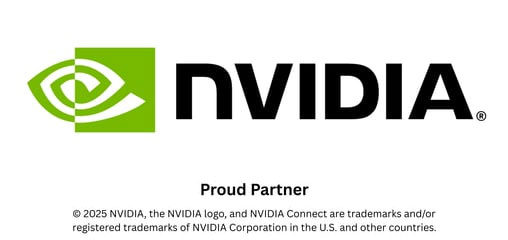Organisations across Europe face a growing dilemma: Do we continue to rely on Big Tech’s AI models – and the convenience and raw power they bring – or do we bet our sovereignty and future on open‑source alternatives?
Having watched both models emerge, I’ve learned one thing: This isn’t a manifesto; it’s a strategic choice. Either path has merits and hidden costs. Let’s explore them candidly, so you can make an informed decision.
The Big Tech LLMs: Scale, Speed - And Sovereignty Risk
Big Tech models like OpenAI’s GPT, Google’s Bard, or Meta’s LLaMA become easier to integrate over time. The maturity of APIs, tools and integration partners means faster implementation, proven performance and enterprise-grade reliability.
Some stats to underline the scale:
72% of enterprises plan to ramp up LLM spending in 2025, with nearly 40% budgeting over US $250K next year. bdtechtalks ajithp prnewswire
Europe’s LLM market is projected to grow from US $1.23 bn in 2023 to US $17.38 bn by 2032 – a 34% CAGR – reinforcing that Big Tech plays a major role. credenceresearch
But that convenience comes with hidden dependencies:
Geopolitical exposure: 84% of UK IT leaders worry about US laws, such as the CLOUD Act, compromising European data sovereignty (and rightfully so). techradar
Opaque algorithms: Many models are still proprietary black boxes. Transparency remains limited.
Vendor lock‑in: Switching costs are high; retraining systems, adapting prompts and renegotiation of contracts.
For many, Big Tech means instant capability, but not strategic control.
The Open‑Source Alternative: Sovereignty at a Cost
Europe is building critical mass in open LLMs. Just this February, the EU launched OpenEuroLLM, a fully open‑source model supporting 35 regional languages, under the Digital Europe programme wikipedia ajithp ifri
On the private side, open‑source models like LLaMA 3, Falcon, Mistral, DeepSeek‑R1 and Salamandra are advancing quickly – they offer transparency, fine‑tunability and on‑prem deployment:
Salamandra covers 35 European languages, released under Apache 2.0 with strong multilingual benchmarks. arxiv
EuroLLM‑9B, trained on EU data for 24 official EU languages, is fully open‑source and competitive in multilingual tasks. arxiv
Open LLMs represent sovereignty, but also technical complexity and cost. Europe is backing this with funding, too: Germany’s Sovereign Tech Agency has poured €51 m into open‑source foundational tech. That’s a firm signal. wikipedia
Yet open does not always mean safe or performant:
Surveys show 30% of open AI models carry high-severity vulnerabilities, raising security and compliance alarms. credenceresearch wikipedia
Licencing complexity also exists: some so‑called “open” LLMs impose usage restrictions or commercial penalties. arxiv
So while open-source is compelling on sovereignty, it demands maturity in security, governance and support.
Big Tech vs Open Source: Executive Scorecard

| Dimension | Big Tech LLMs | Open-Source LLMs |
|---|---|---|
| Access & Speed | Instant integration, mature APIs, proven performance | Needs deployment, custom integration; higher time‑to‑value |
| Cost Structure | Token/API fees, enterprise SLAs | Infrastructure, compute and support; lower marginal costs at scale |
| Transparency | Black‑box models, limited explainability | Full model weights and code, auditability |
| Sovereignty | Exposed to foreign jurisdictions and licence changes | EU‑based, aligned with data sovereignty and audit |
| Security & Governance | Enterprise-level patches, SLAs | Needs internal discipline, though scrutiny is possible |
| Ecosystem | Thriving partner and vendor support | Rapidly evolving, but ecosystem maturity varies |
| Regulatory Fit | GDPR & EU AI Act compliance is complex | Easier to align, but liable if mismanaged |
Finding the Right Balance
European boards must assess both impulse and pragmatism. You don’t need to choose one path exclusively; hybrid models are emerging as the smart middle ground.
1. Strategic Pilots
Trial open‑source models such as Salamandra or OpenEuroLLM on non‑critical workflows. Evaluate performance, governance needs and integration complexity before committing.
2. Standards-first architecture
Use tools like Model Context Protocol (MCP) or LangChain protocols to abstract your downstream stack from the underlying model choice. That cushions future transitions. techcrunch credenceresearch techradar arxiv reuters ajithp
3. Sovereign & hybrid cloud
Host open-source LLMs on EU-based or on-prem infrastructure (Gcore, sovereign PaaS). Keep Big Tech LLMs for high-scale or niche needs, balancing scale and control.
4. Governance from day 1
Open-source is not a free pass. Ensure vulnerability scanning, ethical checks and compliance audits are embedded. Adopt AI Act readiness early.
5. Public-Private Partnerships
Build alliances: OpenEuroLLM is promising, but success depends on consistent backing. Monitor funding, talent and outcomes; pressure governments on commitment.
Where Europe Stands Today
Momentum: European open-source models are no longer experimental; they’re functional and multilingual. reuters arxiv
Investment: €51 m via Germany’s Sovereign Tech Agency, plus EU-level projects like OpenEuroLLM, show serious intent. wikipedia
Market: The continent’s LLM market is growing rapidly, crossing US $1 bn in 2023, projected at US $17 bn by 2032. credenceresearch
Risk: Without careful governance, sovereignty erodes to open-washing; inadequate support and security risks still loom.

Final Take: Europe Needs Both Scale and Sovereignty - Here’s How to Start
The debate between Big Tech and open-source is oversimplified. What actually matters is putting the right tool to the right task – and having the control to do so on your terms.
Use Big Tech LLMs for public-facing or non-sensitive workloads, where cost and speed trump sovereignty, but only where sovereignty concerns are low and no compliance headaches may arise.
Deploy open-source LLMs for critical workloads – sensitive data, regulatory environments, or where full auditability and control are essential.
Design your AI stack to be flexible: The future belongs to those who can orchestrate both—without getting locked in or losing sight of compliance.
Here’s where NORAI RAG Bot comes in.
If you’re serious about testing open-source LLMs without the risk, complexity, or compliance guesswork, NORAI RAG Bot offers a turnkey European solution:
Fully self-hosted in the EU: Keep every byte of your data in your own hands – no external API calls, ever.
Out-of-the-box GDPR, EU AI Act, and HIPAA compliance: Built from the ground up for Europe’s strictest legal requirements.
Enterprise-grade performance, zero vendor lock-in: Start small, scale with confidence, and never handcuff your business to Big Tech’s roadmap.
The bottom line:
Europe doesn’t need to choose sides. You just need to start – safely, strategically and with a partner who knows the rules and the realities.
NORAI RAG Bot is the no-brainer pilot for any organisation that wants to see what open-source AI can really do, without compromise.
Further Reading
TechRadarPro: “Europe needs to decouple from Big Tech USA…5 ways” techradar
FT: “Has Europe’s great hope for AI missed its moment?” (on Mistral) ft
WSJ: “Fears Over U.S. AI Dominance Boost Business for France’s Mistral” wsj
Business Insider: Marc Andreessen on US open-source AI leadership businessinsider
- NORAI RAG Bot norai
Victor A. Lausas
Chief Executive Officer
Subscribe to North Atlantic’s email newsletter and get your free copy of my eBook,
Artificial Intelligence Made Unlocked. 👉 https://www.northatlantic.fi/contact/
Discover Europe’s best free AI education platform, NORAI Connect, start learning AI or level up your skills with free AI courses and future-proof your AI knowledge. 👉 https://www.norai.fi/






